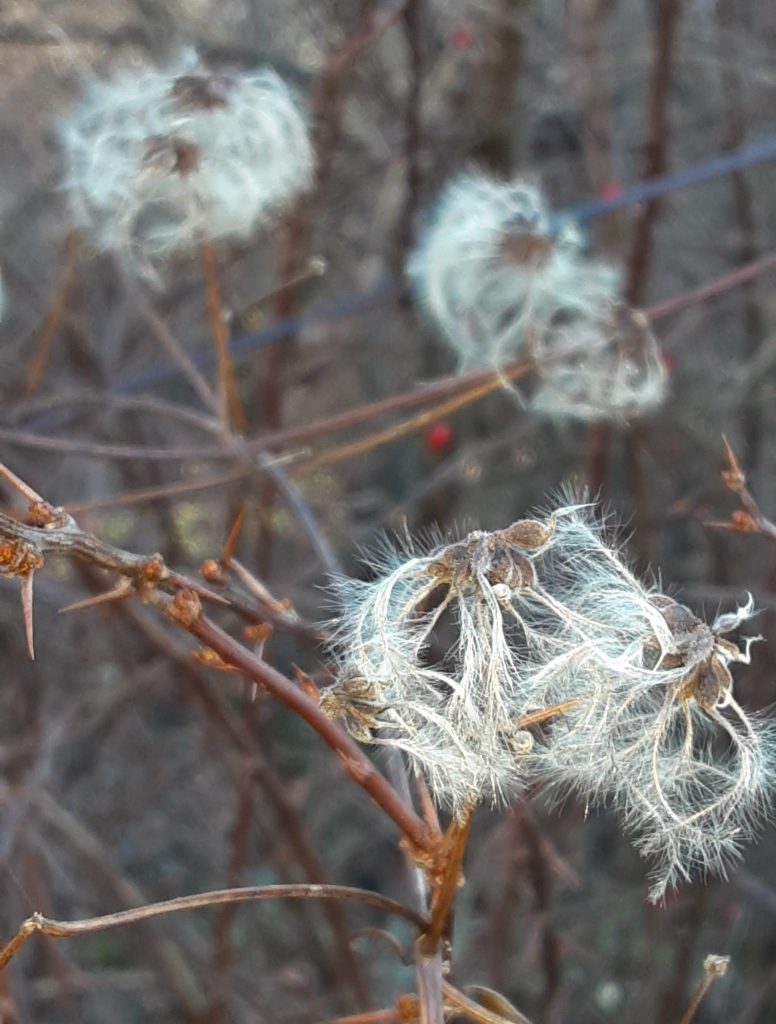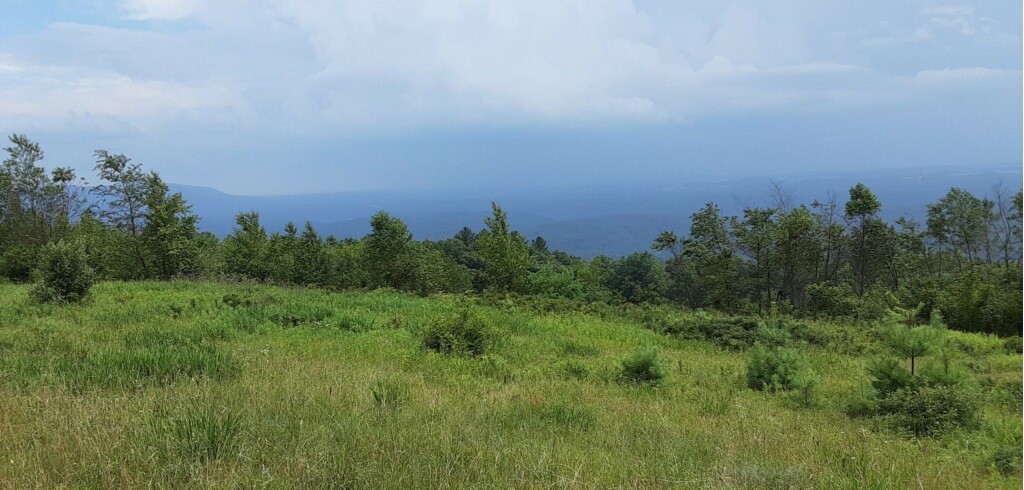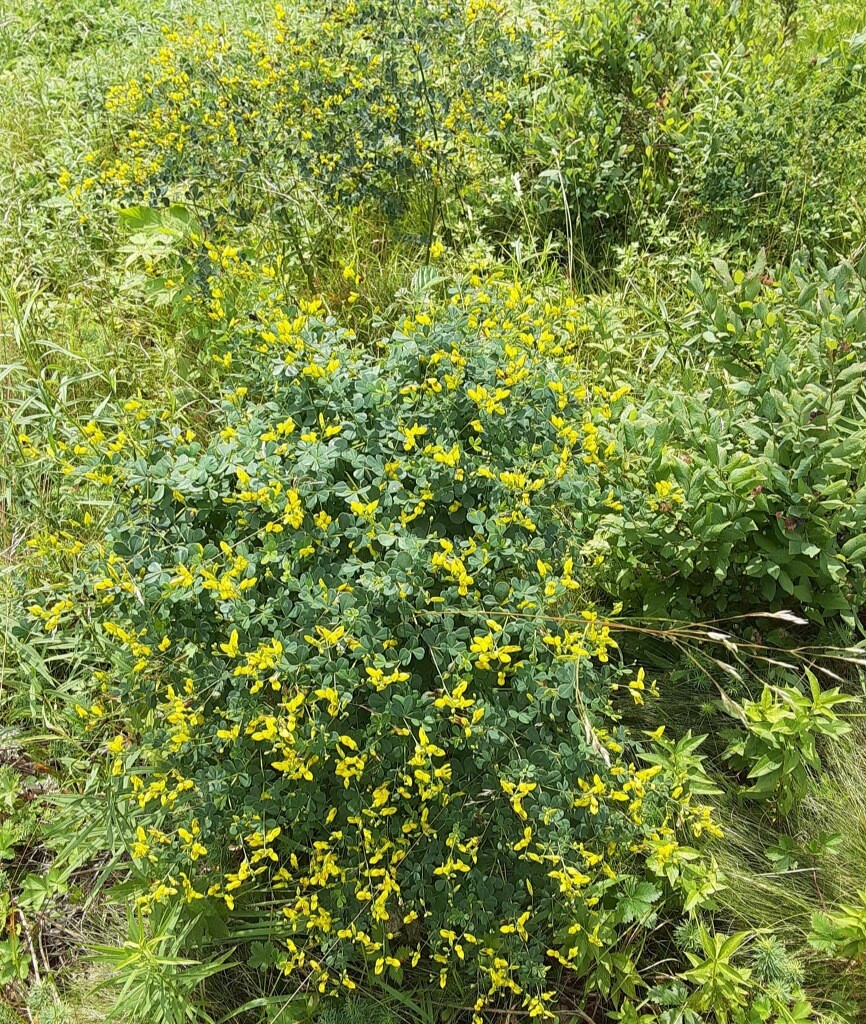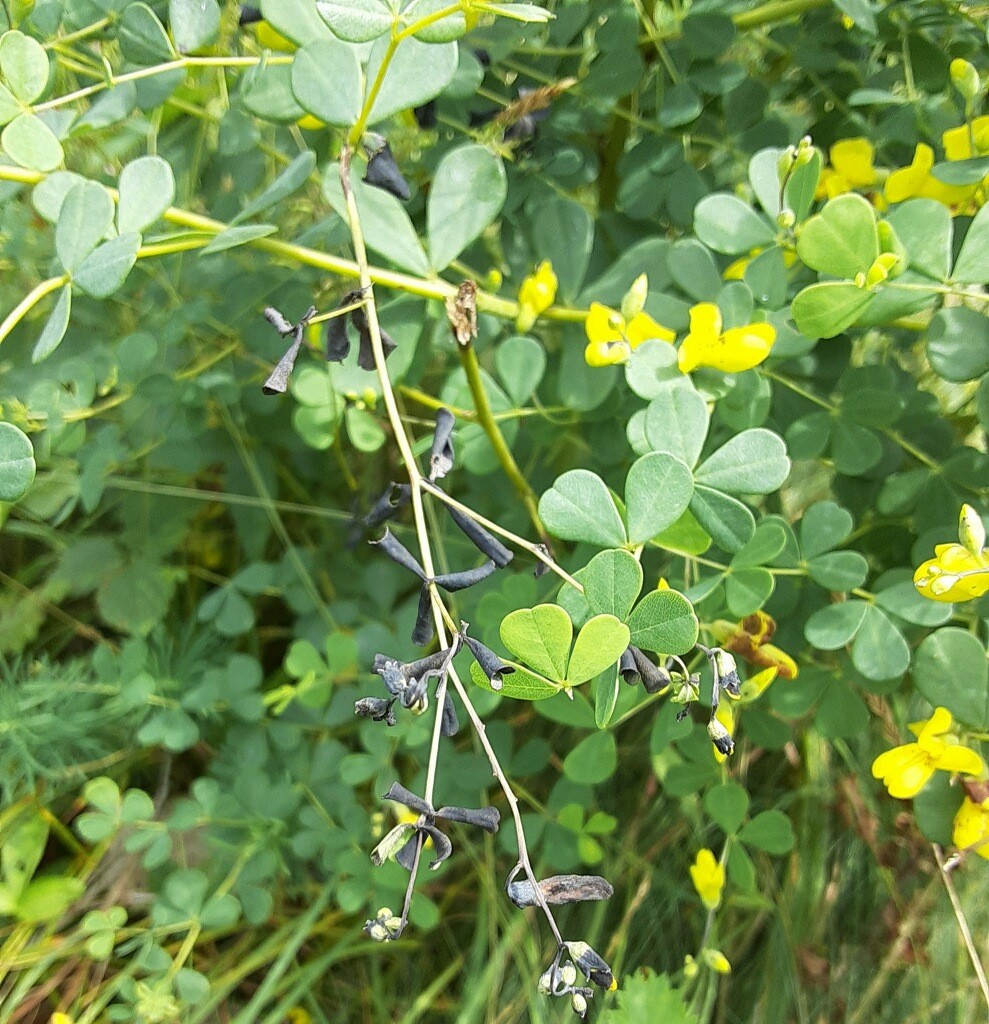By, Susan Sprout
The four-petaled, pure white flowers on this perennial vine may have been responsible for the common name of this plant, along with the fact that it grows upward, winding itself over bushes and trees to form a shaded shelter or bower. Virgin’s Bower, Clematis virginiana, is a member of the Buttercup Family. There are over 250 different species of Clematis in the world; this one is a native of North America. It ranges from Manitoba to Nova Scotia southward and from New England to Georgia. There are two other native Clematis in PA. Both have purple blooms rather than white.
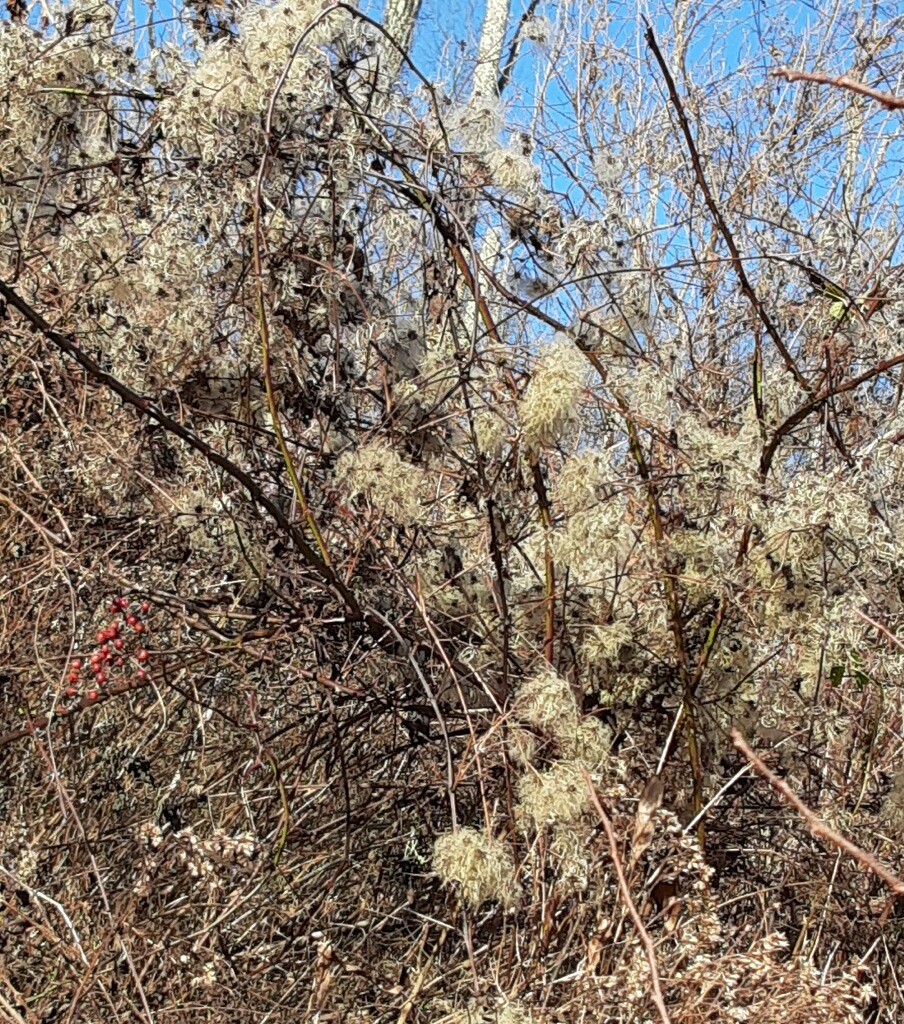
This time of the year, you won’t find any pretty white blossoms or three-part leaves. What remains is very recognizable, however, along roads or low areas near streams where it likes to grow. It will be sprawled over the tops of small trees and thickets that have lost most of their leaves. The female flowers have morphed by now into cascading, snowball-like clusters of silvery-gray, feathery hairs, each holding a dry, one-seeded fruit that doesn’t split open at maturity – it just hangs on and floats away in the winter wind. Of course, Virgin’s Bower has received another common name from this characteristic, Old Man’s Beard! Itchy! Scratchy! Not the beard part of the plant, but rather, the fresh green foliage, which can cause dermatitis and blistering of the skin! And that, in turn, is very strange because the early settlers used the plant to treat itch and skin diseases!
